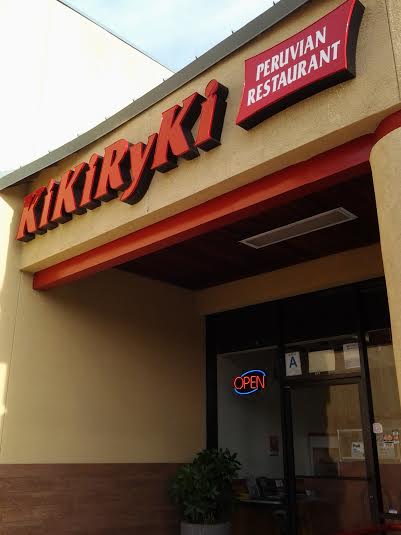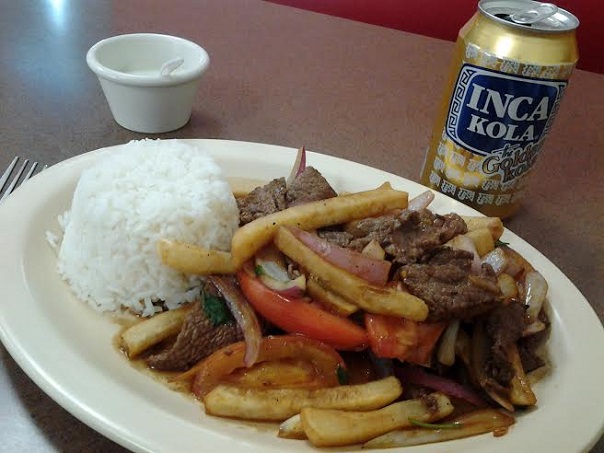[Well, here we are at the end of our little recap of my 2004-05 “Pomona A to Z” columns. I had the topic for Z picked far in advance, relishing the neatness of ending the series the way it began. People kept asking what Z would be but I think the only person I told was Mickey Gallivan, and that’s only because I interviewed her for it. This column was published June 19, 2005.]
You’ll really dig Pomona’s letter Z
Zounds! “Pomona A to Z,” which began in this space last (gulp) July 18, today finally reaches the 26th letter: Z.
Yes, it’s been a zigzag path to Z, but now we’re at the zenith of the “A to Z” ziggurat!
Here we can sip zinfandel, munch on zwieback and dance to zydeco music, while reminiscing about the Z Channel and musing about the zeitgeist.
But let’s hold the zeal until Z is revealed.
Admittedly, my job would be a lot easier if Pomona had a zoo. But to my surprise, the city is zaftig with Z’s:
* Zarzuela, or Spanish musical theater, performed annually at Ganesha Park by (whoa!) the L.A. Opera.
* Jim Zorn, a former quarterback for the Seattle Seahawks who set 10 school records in football at Cal Poly Pomona.
* Tom Zasadzinski, Cal Poly Pomona’s official photographer.
* Dorothy Ziolkowski, a hard-workin’ volunteer for the Friends of the Pomona Library.
* Zzooms Bail Bonds, located near the police station, the better to zoom in to get you out.
Blow me down with a zephyr!
Our Z, of course, is none of these. Admittedly obscure, this Z was there at the start of Pomona, and it’s still there today.
It’s zanja.
(No, not ganja, which was there at the start of Jamaica, and is still there today — zanja.)
Pronounced “sahn-ha,” this was the stone-lined ditch that carried water to Pomona’s first settlements.
It was dug beginning in 1840 to bring water from San Jose Creek to the adobes for irrigation and personal use.
“It was the first water system,” says Mickey Gallivan, president of the Historical Society.
Short segments still exist outside the three remaining adobes: La Casa Primera and Palomares Adobe, which are public, and Alvarado Adobe, which is privately owned.
I learned about the zanja when I visited La Casa Primera (1569 N. Park) for the letter A. Docent Luis Guerrero showed me the ditch in the back.
Going out the way “A to Z” came in, we’re back to the beginnings of Pomona.
Two ranchers, Ygnacio Palomares and Ricardo Vejar, were given title to 15,000 acres of former mission land in 1837, when California was still part of Mexico.
Vejar settled in the south. Palomares took the north, building La Casa Primera, the first house in the Pomona Valley.
He soon had a neighbor. He invited his cousin, Ygnacio Alvarado, to build a house a stone’s throw away.
(Archaeological note: This stone has not been found.)
Alvarado dug the zanja in 1840. It was enlarged as more settlers moved in and needed water, according to an 1888 report by the state engineer.
Palomares moved to a new, larger home in 1854, now known as Palomares Adobe (491 E. Arrow Highway), and a zanja was dug there, too.
A drought in the early 1860s killed thousands of cattle in California, making vast ranches hard to sustain. Vejar borrowed money at predatory rates and lost his holdings.
Palomares’ widow sold 2,000 acres of the homestead in 1874 for $8 an acre to two investors. The sale spelled an end to the Rancho San Jose days — but paved the way for Pomona!
Investors sold off lots for the fledgling city, which incorporated in 1888 with a population of 3,500.
Progress eventually zonked the zanjas.
“The little ditch that had brought water from San Antonio Canon across the sandy waste lands became tunnels and pipe lines and irrigating ditches …” wrote Bess Adams Garner and Miriam Colcord Post in a Historical Society pamphlet.
In L.A., a zanja resurfaced, literally, in March 2005. The Zanja Madre (“Mother Ditch”), the city’s primary water source from 1781 to 1904, was discovered by the Metropolitan Transportation Authority, which was grading land for a rail line.
The 4-foot-wide, brick-lined ditch was quickly reburied out of concern people would develop an interest in history.
In Pomona, the zanjas have been seen by generations of children on field trips to Palomares’ two adobes. The adobes are open to the public from 2 to 5 p.m. each Sunday.
The longest zanja is at La Casa Primera. Two feet wide and almost two feet deep, it’s lined with rock and has a bottom of dirt and pebbles (and dead leaves and weeds).
The zanja begins at the corner of Park and McKinley, then winds behind the house. It passes under a fig tree reputed to be 150 years old and disappears into the pavement at the rear of the property.
A zanja runs through it.
Hey, that could be a movie!
(David Allen writes Sunday, Wednesday and Friday, columns that should be ditched.)


